Trauma Yoga, Goat Yoga, and Other Yoga Trends in an Age of Social Isolation
How are people using yoga to address their mental health needs?
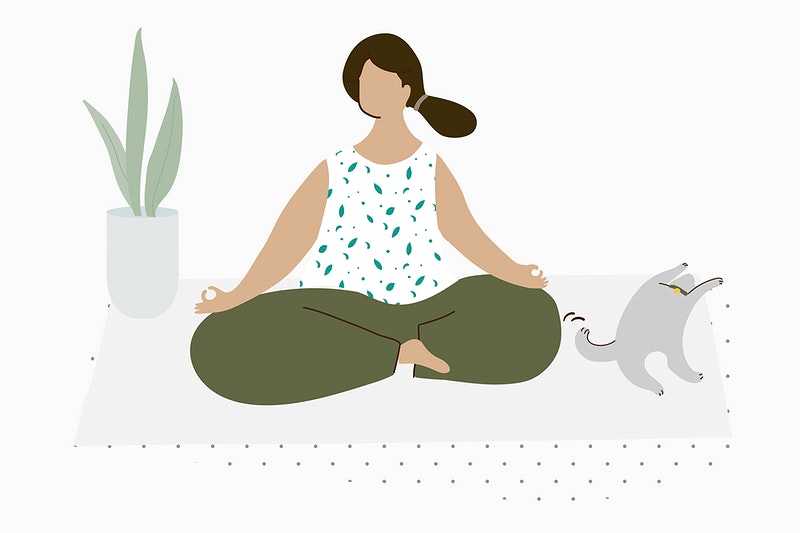 My initial intent when writing this article was to explore the popularity of goat yoga and other yoga trends in the United States. But, like everything else in our lives, the practice of yoga has radically changed recently because of state mandates to enforce social distancing in an effort to eradicate the Covid-19 global pandemic.
My initial intent when writing this article was to explore the popularity of goat yoga and other yoga trends in the United States. But, like everything else in our lives, the practice of yoga has radically changed recently because of state mandates to enforce social distancing in an effort to eradicate the Covid-19 global pandemic.
Because I am revising a book manuscript about yoga, I have signed up to receive a daily email that includes 10 recent articles about yoga. Over the past year, three types of yoga have shown up consistently in my daily alert: trauma yoga, goat yoga, and rage yoga. Within the past few weeks, these alerts have drastically changed. The alerts are now are about canceled classes, yoga studios closing, and making yoga a virtual experience. Today, yoga is moving from communal to virtual spaces.
Yoga is an ancient South Asian combination of movement, meditation, and philosophy that has migrated and changed over time and space. The yoga practiced in the United States today is different than the yoga practiced centuries ago in South Asia. So, while we can trace yoga to the South Asian subcontinent and to various ancient Hindu, Buddhist, and Jain texts, we cannot pinpoint an actual start (much like a banyan tree has many roots, so does yoga). Yoga has been ever moving and changing, which is what makes yoga such a contested and creative space today. In fact, there is a long tradition of people in South Asia using yoga in different ways at different times. To this day, people still use yoga for a variety of reasons.
In the last few years, American yoga has gone from a focus on physical health to a focus on mental health. The growing popularity of trauma yoga, goat yoga, and rage yoga reflect this shift. These three types of yoga all have a therapeutic aspect – either an escape from or a confrontation of personal, societal, or structural anxiety. What makes these three types of yoga particularly interesting is that they are less focused on how the body will look and function after doing yoga, and more about what a person is dealing with mentally in the present moment. This, I believe, is the direction we’re going to see yoga move: yoga is not only a tool for the external body, but a practice for how we can use our bodies to process our emotions. And this new trend in yoga may be especially important with the isolating shift Americans are currently experiencing.
Trauma Yoga
“I wasn’t really aware of how much [yoga] makes you aware of your body and physically and mentally being present . . . I think a lot of people who have experienced trauma are scared to get in tune with their bodies. As women, a lot of people have experienced sexual assault and that sort of thing, and it’s kind of intimidating to be that aware of your body, but I think it’s a good experience, and it’s nothing to be afraid of. I never leave yoga class wishing I hadn’t come” – Jill Shockley, abuse survivor
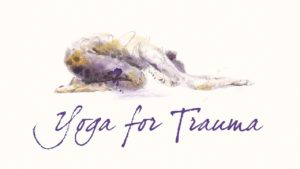 People have practiced trauma yoga for almost 20 years, but in the last few years it has become more popular and accessible. There are yoga programs to help people with PTSD after war, childhood abuse, or some sort of assault. Yoga studios across the country are dedicated to a “trauma-informed” or “sensitive” approach to teaching yoga, and there are multiple books that explore this topic. Trauma yoga, done well, is empowering; through yoga people are able to create spaces that feel safe. Yoga, in turn, becomes part of a multi-faceted approach to treating PTSD and other types of trauma. Mental health therapies often neglect the body during the healing process, and some trauma survivors feel uncomfortable in their own skin. Trauma yoga helps bridge that divide.
People have practiced trauma yoga for almost 20 years, but in the last few years it has become more popular and accessible. There are yoga programs to help people with PTSD after war, childhood abuse, or some sort of assault. Yoga studios across the country are dedicated to a “trauma-informed” or “sensitive” approach to teaching yoga, and there are multiple books that explore this topic. Trauma yoga, done well, is empowering; through yoga people are able to create spaces that feel safe. Yoga, in turn, becomes part of a multi-faceted approach to treating PTSD and other types of trauma. Mental health therapies often neglect the body during the healing process, and some trauma survivors feel uncomfortable in their own skin. Trauma yoga helps bridge that divide.
What makes trauma yoga different than other styles of yoga is that teachers are careful not to touch students or offer corrections in terms of “proper” yoga positions. The focus is not on having correct forms or postures, but on what feels right for one’s body in that moment. David Emerson, director of yoga services at the Trauma Center at Justice Resource Institute in Massachusetts, says “power dynamics are key . . . the facilitator has an obligation to understand power dynamics . . . Trauma does things to relationships where it really splits actor and acted upon in all different ways. It is about really manipulating power. Participating together is an antidote for that.”
Another emerging trend among “trauma-informed” or “sensitive” yoga is yoga that addresses the trauma of racism. We know that racism causes stress, and many yoga studios in the U.S. perpetuate and privilege whiteness to the detriment of black and brown people. So when a person of color goes into yoga studios it often can be re-traumatizing. Gail Parker, a scholar who practices and teaches yoga out of the Detroit area, has written extensively about adapting yoga to address racial trauma. In an interview with Yoga Journal, Parker says, “Ethnic- and race-informed Restorative Yoga teaches people to experience safety in their vulnerability . . . People who are consistently marginalized, discriminated against, and profiled already know how to stand in the fire of unbearable suffering. They need the therapeutic experience of resting in safety. They need to learn what the absence of stress feels like.” The focus on safety and feeling okay in one’s body is why we are starting to see people look at trauma-informed yoga in order to heal the emotional pains of white supremacy and racism.
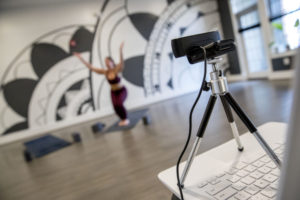
In this new moment of social distancing, trauma yoga classes have gone online. Because of the practice of not touching the body and making everyone feel safe, trauma yoga might easily adapt to moving out of the studio and into the virtual world. It might also gain in popularity as people experience more anxiety and uncertainty about Covid-19. At the same time, for many people part of the healing process includes physical proximity with others, so it remains to be seen if virtual spaces can facilitate healing in different ways. Dr. Parker is currently offering an online course on the “psychological impact of ethnic and race based stress and trauma on all of us, and how we in the yoga community can contribute to healing the wounds that result.” And Trauma Center Trauma-Sensitive Yoga is offering a series of online sessions “to provide support and community for people in every city, state and country.”
Goat Yoga
“Yoga is about the breath. If you sit here the whole time and have a goat chew on your hair, and you’re present and you’re breathing, that’s yoga.” – Meridith Lana Schwartz, Goat Yoga Instructor
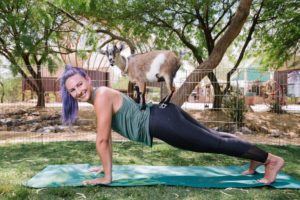 A typical goat yoga class involves goats roaming around as people learn yoga poses. Some classes stop so students can play with the goats, while others offer a more traditional yoga class followed by playtime and cuddle-time that can include taking selfies with the goats. Goat yoga businesses offer private classes, bachelorette parties, retreats with wine, and more. One yoga studio even offers a troop package for Girl Scouts to earn a Goat Yoga Badge. The common thread at goat studios is the spiritual and therapeutic experience they claim to offer. At Secret Eden Goat Yoga in Dayton, Ohio, which considers itself an “Urban Retreat for your Mind and Body,” they state that goat yoga is not only a fun experience but also a “spiritual experience like no other. You’ll feel it inside you.” Many also tout the therapeutic benefits of goat yoga, pointing to various studies that show how goats add a fun element to yoga, which leads to laughter and happiness and helps combat depression and anxiety. This past January, the Wounded Warrior Project organized a goat yoga event for veterans suffering from PTSD. During this class, they “disconnected from stress and found relaxation and positive feelings.”
A typical goat yoga class involves goats roaming around as people learn yoga poses. Some classes stop so students can play with the goats, while others offer a more traditional yoga class followed by playtime and cuddle-time that can include taking selfies with the goats. Goat yoga businesses offer private classes, bachelorette parties, retreats with wine, and more. One yoga studio even offers a troop package for Girl Scouts to earn a Goat Yoga Badge. The common thread at goat studios is the spiritual and therapeutic experience they claim to offer. At Secret Eden Goat Yoga in Dayton, Ohio, which considers itself an “Urban Retreat for your Mind and Body,” they state that goat yoga is not only a fun experience but also a “spiritual experience like no other. You’ll feel it inside you.” Many also tout the therapeutic benefits of goat yoga, pointing to various studies that show how goats add a fun element to yoga, which leads to laughter and happiness and helps combat depression and anxiety. This past January, the Wounded Warrior Project organized a goat yoga event for veterans suffering from PTSD. During this class, they “disconnected from stress and found relaxation and positive feelings.”
Goat yoga experiences might not be possible in the coming months. The Original Goat Yoga, which was trademarked, merchandised, and franchised across the U.S. in 2016 by Lainey Morse, is attempting virtual goat yoga classes, which offer the opportunity to look at goats but do not recreate the experience of goats roaming a yoga studio. Other goat yoga places, like Arizona Goat Yoga (they claim they started goat yoga first in 2015) are canceling classes through mid-April. Once we can safely have yoga classes again, it remains to be seen if goat yoga will continue its popularity or if it will fizzle out.
Rage Yoga
“Rage Yoga – [reyj yoh–guh] noun: a practice involving breath work, positional exercises, and the expressing of raw emotions with the goal of attaining good health and to become zen as f*uck. More than just a practice, Rage Yoga is an attitude and a method of connecting you to your most Badass Self” – Lindsay Istace, Rage Yoga Founder/Creator
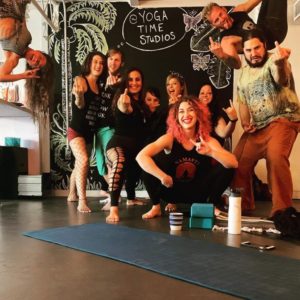
Like goat yoga, rage yoga has reimagined what can happen in a yoga space. For example, Ashley Duzich, a certified rage yoga teacher, holds some of her classes at Brash Brewery in Houston, Texas. During a typical rage yoga class at the brewery, heavy metal music plays in the background, participants raise their middle finger, students take beer breaks, and people curse and scream while practicing yoga poses. Duzich told a local TV station that rage yoga is therapeutic because “we’re all angry about something. We all have been holding onto an f-bomb for a little bit too long . . . [rage yoga] allows you to have a safe space to let go of your anger and frustration and rage in a healthy way, and then also wash it all away with some ice-cold beer!”
Rage yoga founder Linday Istace and Duzich are clear that this type of yoga might not be for everyone. But, they stress, it works well for those who do not feel comfortable in a “traditional” yoga space, and for those who want a more communal yoga experience. At a rage yoga class, students are encouraged to make eye contact with one another. They also drink and laugh together, all while releasing their built up anger, which practitioners claim helps treat anxiety and stress.
Rage yoga classes currently take place in fourteen cities across the U.S. Online rage yoga courses are also available. In this way, rage yoga was already positioned for the onset of a global pandemic and the anger, frustration, and rage that might arise from being cooped up in one’s home all day. And yet, like goat yoga, rage yoga has a communal aspect (laughter, drinking, screaming with others) that might not be duplicated in one’s living room.
***
All three of these yoga practices are part of a larger global trend that stretches back almost a century. People have used yoga to treat drug addiction, to become slimmer, to gain strength, and to feel younger. Yoga and health have always been connected since yoga was first exported out of India. Now, in the 21st century, people are finding new ways that yoga can use the body to help the mind, to alleviate anxiety, and to address the symptoms of trauma. At the same time, we are becoming more aware of how yoga in the U.S. has been dominated by whites. Yoga spaces can feel oppressive to many people of color. It does not surprise me that using yoga to heal the trauma of racism has also become popular.
The thing about yoga is that it works. It worked in South Asia for thousands of years in ways that fit South Asian context, and it continues to work here in ways that make sense in this context. So, as you read this article while practicing social distancing and as you think about what to do next, one of these three yoga practices might appeal to you. You can either try to join in virtually or make plans to join a class once we can safely be more proximate to each other. The speed at which yoga studios started to offer live-stream and virtual yoga classes to fit this moment of social isolation is reflective of the ever-changing nature of yoga. The question now is what happens after social isolation. Will the smaller yoga studios permanently close? Will yoga flourish virtually? Will people jump back into communal yoga spaces, craving contact after weeks or months of isolation? And will the very contours of American yoga continue to change to meet the challenge of better mental health support, or will yoga’s older focus on physical health eclipse the trends of last few years?
Shreena Niketa Gandhi is a member of the Religious Studies faculty at Michigan State University. She is an expert on religion and race in the Americas and has been researching yoga in the U.S. for over 15 years. Her book on the cultural history of yoga and whiteness in the U.S. is currently under review.
***
Published with support from the Henry R. Luce Initiative on Religion in International Affairs.